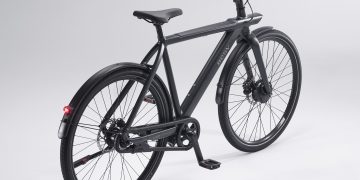With the rise of electric bikes (e-bikes) as a sustainable and efficient mode of transportation, the need for convenient charging solutions has become more critical than ever. Traditional e-bike charging methods, typically involving plugging a cable into a port, have served their purpose but come with inherent limitations in terms of convenience, time, and usability. Enter wireless charging, a technology that has revolutionized everything from smartphones to electric vehicles, and now it’s making its way into the world of e-bikes. But is wireless charging truly practical for daily use? Can it meet the needs of everyday cyclists who rely on their e-bikes for commuting, leisure, or fitness? In this article, we’ll dive into the world of wireless charging solutions for e-bikes, exploring their convenience, charging efficiency, and overall feasibility for daily cycling.
The Rise of Wireless Charging Technology
Wireless charging, or inductive charging, is a technology that allows electric devices to charge without the need for physical cables. Instead of plugging a cord into a port, users place their devices on a charging pad or station that uses electromagnetic fields to transfer energy. This method has already been implemented in various industries, from smartphones to electric vehicles (EVs), offering consumers the convenience of charging their devices with minimal effort.
In the world of e-bikes, the concept of wireless charging offers significant potential. Imagine simply parking your e-bike in a designated area and allowing it to charge automatically, without needing to fiddle with cables or worry about plugging in. Wireless charging eliminates one of the most tedious aspects of e-bike ownership, making it easier to keep your bike powered up and ready for the next ride.
As e-bike usage continues to increase globally, the demand for more user-friendly and efficient charging solutions has escalated. With this growing need in mind, several companies have started to explore and develop wireless charging systems specifically designed for e-bikes. These systems promise to enhance the e-bike experience by offering hassle-free, seamless charging that fits into the daily routine of a cyclist.
How Wireless Charging Works for E-Bikes
At its core, wireless charging for e-bikes operates on the same principles as other wireless charging technologies. The system typically consists of two main components: a charging pad or station and a receiver installed on the bike. The charging pad generates an electromagnetic field, which is captured by the receiver on the bike, where the energy is then converted back into electricity to charge the bike’s battery.
For e-bikes, wireless charging systems often work with inductive charging technology, which uses coils embedded in both the charging pad and the bike’s receiver to transfer energy. These systems are designed to be efficient, capable of charging a bike’s battery while the bike is in a resting position, often in a designated charging station at home, a public charging point, or even a workplace.
Wireless charging is marketed as a more convenient and user-friendly solution compared to traditional plug-in charging. The key benefits are obvious: no more tangled cables, no need to search for charging ports, and the ability to charge your bike with minimal physical effort. However, as with any emerging technology, there are questions about its practicality in real-world applications. Can wireless charging for e-bikes deliver on its promises of convenience and efficiency?
The Pros of Wireless Charging for E-Bikes
1. Convenience and Ease of Use
One of the most significant advantages of wireless charging for e-bikes is the sheer convenience it offers. Traditional charging methods require cyclists to manually plug in and unplug their e-bikes, often in awkward or hard-to-reach locations. With wireless charging, cyclists can simply park their bikes near the charging station and let the system do the work. This makes the entire charging process more intuitive, reducing the likelihood of forgetting to charge the bike or dealing with tangled cables.
For urban commuters, this is a particularly appealing feature. Imagine parking your e-bike at work, at a café, or in a public area, and knowing that your bike will automatically charge as soon as you leave it in the designated spot. It’s a hassle-free way to ensure that your e-bike is always ready to go without the need for extra time or effort spent on plugging in chargers.
2. No Need for Extra Cables or Connections
One of the challenges of traditional e-bike charging is the clutter and inconvenience of cables. With wireless charging, this problem is eliminated. There’s no need to keep track of a separate charging cable, and you don’t have to worry about it getting damaged, tangled, or lost. The ability to simply place your e-bike on a charging pad makes it much more user-friendly, especially for cyclists who don’t want to deal with the extra gear that comes with traditional charging.
Additionally, wireless charging can reduce wear and tear on charging ports. Over time, repeated plugging and unplugging of charging cables can cause ports to degrade, which can lead to problems with charging efficiency. Wireless charging helps avoid this issue entirely.
3. Seamless Integration into Urban Infrastructure
Wireless charging stations are easy to integrate into existing urban infrastructure. City planners and businesses can install wireless charging pads in places like bike racks, parking lots, and public spaces, enabling cyclists to charge their e-bikes while they are out and about. This could help reduce “charging deserts” in cities, where it can be difficult to find a convenient spot to charge an e-bike.
Some companies have already begun installing wireless charging pads in select public spaces, creating the possibility for widespread adoption in the near future. In the long run, wireless charging could play a crucial role in supporting the growth of e-bikes in urban areas by making charging as easy as parking your bike.
4. Enhanced Durability and Protection from the Elements
Unlike traditional charging ports, which can be vulnerable to dirt, moisture, and corrosion, wireless charging systems can be more resilient to environmental factors. Since there are no exposed ports, wireless charging stations and bike receivers are less likely to accumulate dirt, rust, or other contaminants that could compromise their performance. This adds a layer of protection to the e-bike’s charging system, increasing its longevity and reliability.

The Cons of Wireless Charging for E-Bikes
1. Charging Efficiency and Speed
One of the biggest drawbacks of wireless charging for e-bikes is the efficiency and speed of charging. Wireless charging systems typically have lower efficiency compared to traditional wired systems. This means that it may take longer to charge your e-bike using a wireless pad compared to using a conventional plug-in charger. For daily riders who need to recharge their bike quickly, this can be a significant limitation.
While advancements in wireless charging technology continue to improve efficiency, it’s still unlikely that wireless charging will be as fast as wired systems in the near future. This could be a deal-breaker for commuters who rely on quick recharges during their daily routine.
2. Higher Costs and Accessibility Issues
At present, wireless charging systems for e-bikes are still relatively new and, therefore, come at a premium price point. While the cost of the technology will likely decrease over time, early adopters will need to pay more for the convenience of wireless charging. Additionally, wireless charging stations are still limited in many areas, meaning that cyclists may not always have access to these systems when they need them.
For cyclists in rural areas or places without widespread infrastructure, wireless charging may not be a feasible option, as the technology may not be readily available in their region.
3. Compatibility Issues
Another challenge with wireless charging for e-bikes is compatibility. Not all e-bikes are equipped with the necessary receivers or infrastructure to support wireless charging. This means that cyclists may need to purchase additional accessories or retrofit their bikes to make them compatible with wireless systems. This adds to the overall cost and complexity of adopting this technology.
Additionally, not all wireless charging pads are created equal. Different systems may use different standards or technologies, leading to compatibility issues between charging stations and e-bikes.
Conclusion: Is Wireless Charging Ready for Daily Use?
Wireless charging for e-bikes is undoubtedly an exciting innovation that promises to improve convenience and ease of use for cyclists. It offers a more user-friendly solution compared to traditional wired charging, reducing the hassle of cables and making charging a seamless part of the e-bike experience. However, while wireless charging has significant potential, it’s not without its drawbacks.
Charging efficiency, speed, and cost remain significant concerns, particularly for daily riders who rely on their e-bikes for commuting or long-distance travel. Wireless charging is still in its early stages, and while it is a promising technology, it’s not yet a perfect fit for all cyclists.
For casual riders or those who primarily ride in urban areas with access to wireless charging stations, this technology could be an excellent solution. However, for serious commuters or long-distance riders, it may still be worth relying on traditional charging methods for the time being.
As technology continues to evolve and wireless charging infrastructure becomes more widespread, it’s likely that this will become a more viable option for daily use. Until then, cyclists should weigh the pros and cons of wireless charging and consider how it fits into their personal cycling needs.





































Discussion about this post